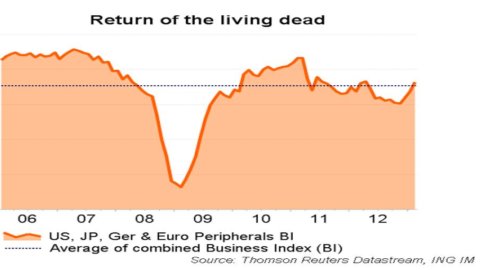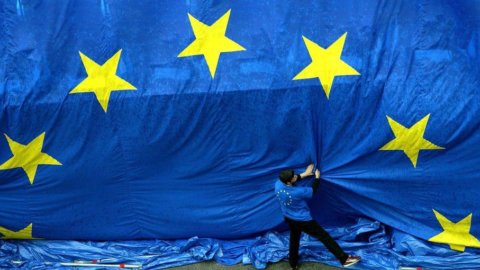Despite the renewed political problems in Italy, and other more recent ones, markets remain surprisingly resistant to bad news, and stocks rally to highs. Volatility is high and relative performance across asset classes, and also across regions and sectors, is somewhat less correlated. However, there are signs in support of risky assets that prevent short-term volatility from turning into a long-term negative trend.
A relatively cautious positioning by retail savers and a rather wait-and-see attitude by institutional investors, after five years of crisis, are probably fueling the above dynamics and a context with low returns that craves returns. However, before investors make a decisive move from liquidity to risky assets, the overall picture is expected to improve further. And it would appear that this situation is happening, following the most important recovery since 2009.
In addition to this, the interventions of the central banks have reduced the risk of systemic crises for the future, helping investors have higher expectations of higher returns in the months ahead. From this point of view, it is also interesting to analyze the results of the elections in Italy which highlight the importance of having a solid global economy to contain political risk. And voter voting has once again demonstrated a positive correlation to economic conditions. A weak economy, such as the Italian one, leads to dissatisfaction and distrust of the government in office, whatever it may be, while growth leads to guaranteeing continuity towards politicians considered to be the architects of a positive situation. Consequently, if the global economic cycle continues to grow, political risk will tend to be increasingly relative.
The current recovery also has another particularly interesting aspect: it seems to be driven by those countries which at a given moment in the last decade were considered dead and buried. In the first years following the introduction of the euro, Germany was considered "the sick man of Europe", afflicted by the problem of uncompetitive exchange rates and seemingly unable to cope with persistently high unemployment. Since the Lehman crash, there has been widespread belief that the United States had adopted the wrong model of growth, based on excessive credit creation, while the recent revitalization of the Japanese economy follows two decades of stagnation due to the collapse of the real estate sector and the stock bubble. Finally, even the European periphery, notoriously uncompetitive, has recently started to move away from the trough. The recovery phase is only in its infancy and starting levels are extremely low, but the monthly results of business confidence surveys in Spain, Portugal and even Greece have now marked the third consecutive increase.
A combined index aimed at investigating the business confidence of the United States, Germany, Japan and three peripheral European countries indeed shows a clear recovery in the last three months. The index jumped more than 3 points from its recent low in November, and at 48,2 is back roughly in line with its average since 2006. By contrast, traditional growth leaders such as emerging markets, and in particular China, and the traditional sources of economic stability, namely Italy, France, the United Kingdom and the Netherlands, the new "European states of stagnation", are lagging behind the "revived" economies and do not seem ( again) accelerate.
At this stage, therefore, the best thing to do to understand the direction of the global cycle is monitor "the return of the living dead", namely Germany, the United States, Japan and peripheral European countries. It will be this part of the world that will provide clues as to the direction of growth, the likelihood of political tensions and investors' willingness to seek risk rather than safety.





